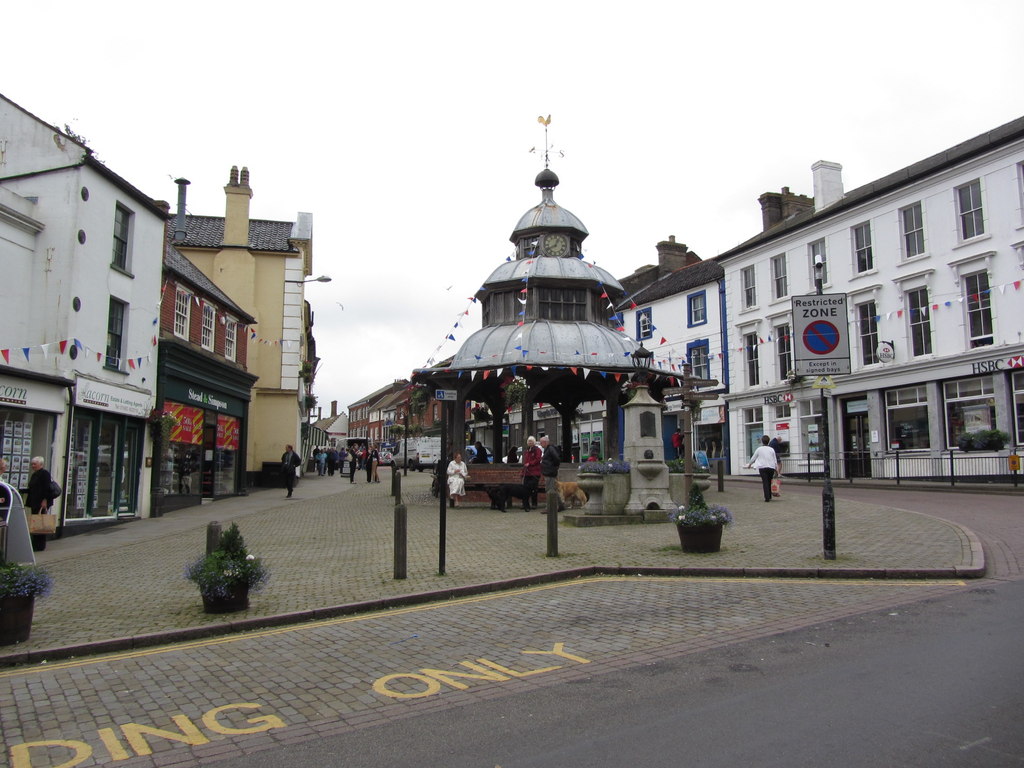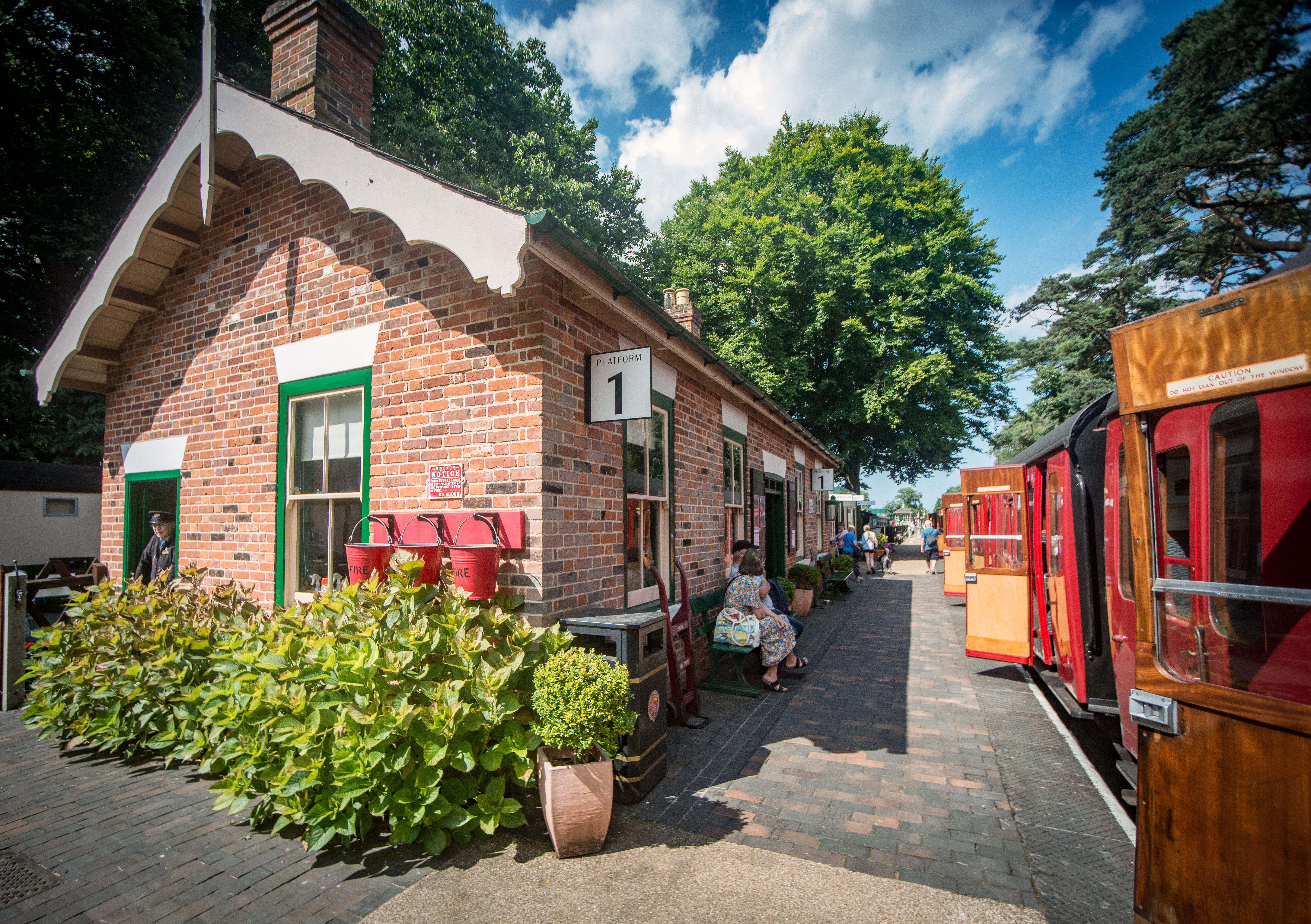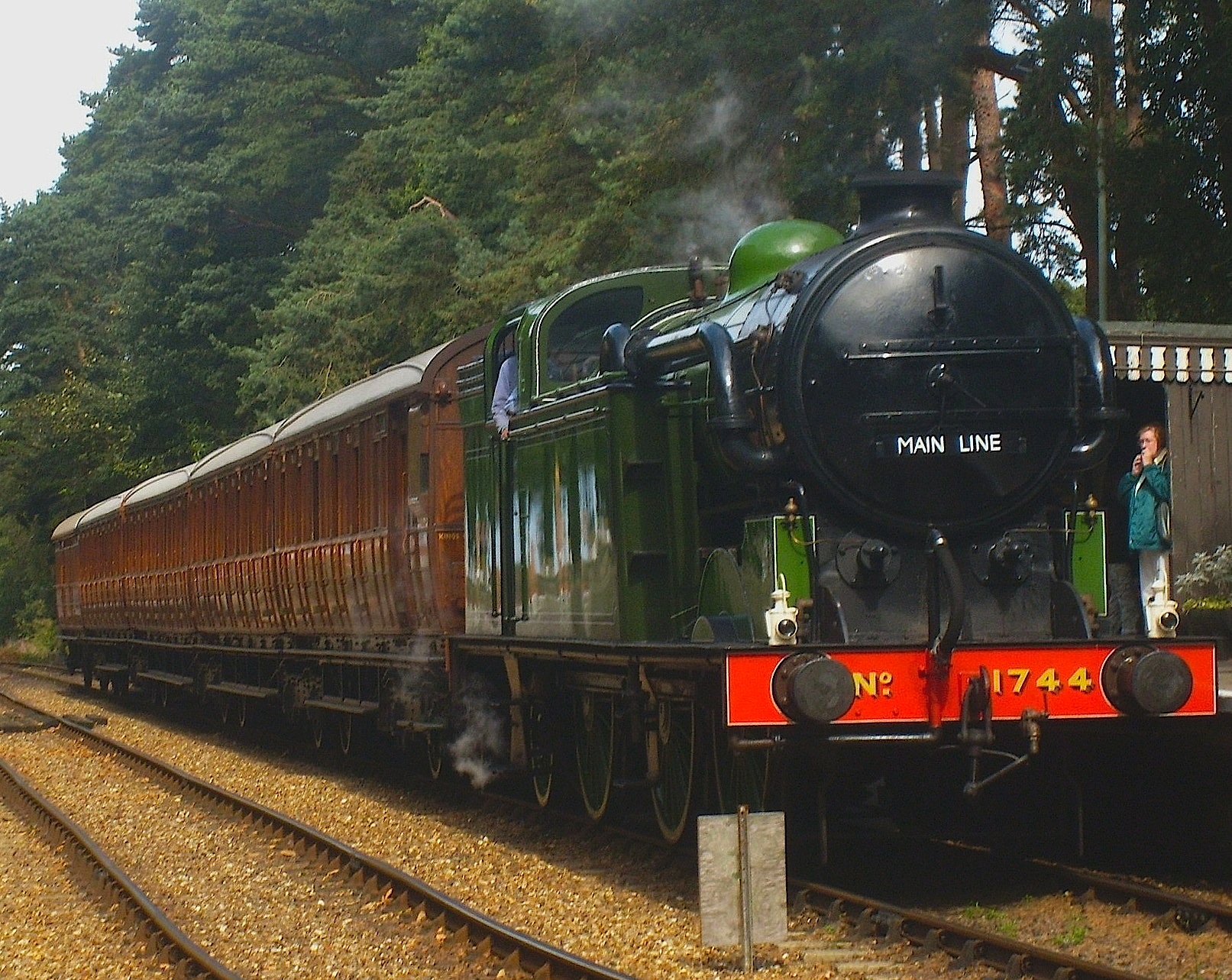|
Stalham Railway Station
Stalham railway station was a railway station that served the market town of Stalham in Norfolk, England. It was on the line between Melton Constable and Great Yarmouth. It is now closed, having been shut in 1959 when the line was closed. The station lay derelict and unused for many years after closure. However the station buildings were dismantled and rebuilt at the new Holt station on the North Norfolk Railway The North Norfolk Railway (NNR) – also known as the "Poppy Line" – is a heritage railway, heritage steam railway in Norfolk, England, running between the towns of Sheringham and Holt, Norfolk, Holt. The North Norfolk Railway is owned .... References External links Stalham station on navigable 1946 O. S. map {{coord, 52.7723, 1.5107, type:railwaystation_region:GB, display=title Disused railway stations in Norfolk Former Midland and Great Northern Joint Railway stations Railway stations in Great Britain opened in 1880 Railway stations in Grea ... [...More Info...] [...Related Items...] OR: [Wikipedia] [Google] [Baidu] |
Stalham
Stalham is a market town and civil parish on the River Ant in the English county of Norfolk, in East Anglia. It covers an area of and had a population of 2,951 in 1,333 households at the 2001 census, the population increasing to 3,149 at the 2011 Census. It lies within the Norfolk Broads, about north-east of Norwich on the A149 road. For the purposes of local government, it falls within the district of North Norfolk. The parts of the parish lying adjacent to the river fall into the executive area of the Broads Authority. The town's name probably means, "fish pool homestead/village" but perhaps, "hemmed-in land with a fish pool". Stalham was served by a railway station until it was closed in 1959. The nearest railway station is now Worstead. Through the 1960s Stalham's economy sank from a reduction of the agricultural labour force as a result of improvements in agricultural technology. Beginning in the 1970s, though, housing developments attracted people who took up reside ... [...More Info...] [...Related Items...] OR: [Wikipedia] [Google] [Baidu] |
North Norfolk
North Norfolk is a Non-metropolitan district, local government district in Norfolk, England. Its council is based in Cromer, and the largest town is North Walsham. The district also includes the towns of Fakenham, Holt, Norfolk, Holt, Sheringham, Stalham and Wells-next-the-Sea, along with numerous villages and surrounding rural areas. The district lies on the north coast of Norfolk, facing the North Sea, with much of its coastline lying within the Norfolk Coast AONB, Norfolk Coast Area of Outstanding Natural Beauty. Some south-eastern parts of the district lie within The Broads. The neighbouring districts are Borough of Great Yarmouth, Great Yarmouth, Breckland District, Breckland, Broadland and King's Lynn and West Norfolk. History The district was created on 1 April 1974 under the Local Government Act 1972, covering seven former districts which were all abolished at the same time: *Cromer Urban district (England and Wales), Urban District *Erpingham Rural District *North Wa ... [...More Info...] [...Related Items...] OR: [Wikipedia] [Google] [Baidu] |
Ordnance Survey National Grid
The Ordnance Survey National Grid reference system (OSGB), also known as British National Grid (BNG), is a system of geographic grid references, distinct from latitude and longitude, whereby any location in Great Britain can be described in terms of its distance from the origin (0, 0), which lies to the west of the Isles of Scilly. The Ordnance Survey (OS) devised the national grid reference system, and it is heavily used in its survey data, and in maps based on those surveys, whether published by the Ordnance Survey or by commercial map producers. Grid references are also commonly quoted in other publications and data sources, such as guide books and government planning documents. A number of different systems exist that can provide grid references for locations within the British Isles: this article describes the system created solely for Great Britain and its outlying islands (including the Isle of Man). The Irish grid reference system is a similar system created by the ... [...More Info...] [...Related Items...] OR: [Wikipedia] [Google] [Baidu] |
Midland And Great Northern Joint Railway
The Midland and Great Northern Joint Railway (M&GNJR) was a railway network in England, in the area connecting southern Lincolnshire, the Isle of Ely and north Norfolk. It developed from several local independent concerns and was incorporated in 1893. It was jointly owned by the Midland Railway and the Great Northern Railway (Great Britain), Great Northern Railway, and those companies had long sponsored and operated the predecessor companies. The area directly served was agricultural and sparsely populated, but seaside holidays had developed and the ran many long-distance express trains to and from the territory of the parent companies, as well as summer local trains for holidaymakers. It had the longest mileage of any joint railway in the United Kingdom. In the Railways Act 1921, grouping of 1923, the two joint owners of the were absorbed into two separate companies (the Midland into the London, Midland and Scottish Railway and the Great Northern into the London and North Ea ... [...More Info...] [...Related Items...] OR: [Wikipedia] [Google] [Baidu] |
Eastern Region Of British Railways
The Eastern Region was a region of British Railways from 1948, whose operating area could be identified from the dark blue signs and colour schemes that adorned its station and other railway buildings. Together with the North Eastern Region (which it absorbed in 1967), it covered most lines of the former London and North Eastern Railway, except in Scotland. By 1988 the Eastern Region had been divided again into the Eastern Region and the new Anglia Region, with the boundary points being between and , and between and . The region ceased to be an operating unit in its own right in the 1980s and was wound up at the end of 1992. History The region was formed in at nationalisation in 1948, mostly out of the former Great Northern, Great Eastern and Great Central lines that were merged into the LNER in 1923. Of all the "Big Four" pre-nationalisation railway companies, the LNER was most in need of significant investment. In the immediate post-war period there was a need to rebuild ... [...More Info...] [...Related Items...] OR: [Wikipedia] [Google] [Baidu] |
Norfolk
Norfolk ( ) is a Ceremonial counties of England, ceremonial county in England, located in East Anglia and officially part of the East of England region. It borders Lincolnshire and The Wash to the north-west, the North Sea to the north and east, Cambridgeshire to the west, and Suffolk to the south. The largest settlement is the city of Norwich. The county has an area of and a population of 859,400. It is largely rural with few large towns: after Norwich (147,895), the largest settlements are King's Lynn (42,800) in the north-west, Great Yarmouth (38,693) in the east, and Thetford (24,340) in the south. For local government purposes Norfolk is a non-metropolitan county with seven districts. The centre of Norfolk is gently undulating lowland. To the east are the Broads, a network of rivers and lakes which extend into Suffolk and which are protected by the Broads Authority, which give them a similar status to a National parks of England and Wales, national park. To the west the ... [...More Info...] [...Related Items...] OR: [Wikipedia] [Google] [Baidu] |
Melton Constable
Melton Constable is a village and civil parishes in England, civil parish in the North Norfolk district of the county of Norfolk, England. It covers an area of and had a population of 518 in 225 households at the United Kingdom Census 2001, 2001 census. The population had increased to 618 at the 2011 Census. For the purposes of local government, it falls within the Non-metropolitan district, district of North Norfolk. The village sits on fairly high ground south-west of Holt, Norfolk, Holt. History The place-name ''Melton Constable'' is first attested in the Domesday Book of 1086, where it appears as ''Maeltuna''. This may mean either 'middle town' or 'mill town'. There is a reference to 'Constabularius de Melton' in 1197, as the land was held by the constable of the bishop of Norwich. Melton Constable Hall Melton Constable Hall is regarded as the finest specimen of the Christopher Wren style of house. St Peter Church St Peter's, Melton Constable, the Church of England p ... [...More Info...] [...Related Items...] OR: [Wikipedia] [Google] [Baidu] |
Great Yarmouth
Great Yarmouth ( ), often called Yarmouth, is a seaside resort, seaside town which gives its name to the wider Borough of Great Yarmouth in Norfolk, England; it straddles the River Yare and is located east of Norwich. Its fishing industry, mainly for herring, shrank after the mid-20th century and has all but ended. North Sea oil from the 1960s supplied an oil rig industry that services offshore natural gas rigs; more recently, offshore wind power and other renewable energy industries have ensued. Yarmouth has been a resort since 1760 and a gateway from the Norfolk Broads to the North Sea. Holidaymaking rose when a railway opened in 1844, bringing easier, cheaper access and some new settlement. Wellington Pier opened in 1854 and Britannia Pier in 1858. Through the 20th century, Yarmouth boomed as a resort, with a promenade, pubs, trams, fish-and-chip shops, theatres, the Great Yarmouth Pleasure Beach, Pleasure Beach, the Sea Life Centres, Sea Life Centre, the Great Yarmouth Hi ... [...More Info...] [...Related Items...] OR: [Wikipedia] [Google] [Baidu] |
Holt (North Norfolk Railway) Railway Station
Holt railway station, opened in 1987, is the current terminus of the North Norfolk Railway and is a new-build station half a mile south of the proposed, but never built, Blakeney branch junction. The station building once belonged to Stalham railway station, but was moved and reconstructed on site. The current station is located just under a mile away from the site of the original Holt railway station, which had been closed in 1964 by British Railways. William Marriott Museum The William Marriott Museum is located in the goods shed at the station. Operated by the Midland and Great Northern Joint Railway Society, the museum features railroad artefacts and memorabilia, as well as historic buildings, locomotives, rolling stock and a historic signalling system. The museum is open on days when the North Norfolk Railway is operating. Miniature railway For around 16 years, the Holt station included a miniature railway operated by the North Norfolk Model Railway Club. In 2019, ... [...More Info...] [...Related Items...] OR: [Wikipedia] [Google] [Baidu] |
North Norfolk Railway
The North Norfolk Railway (NNR) – also known as the "Poppy Line" – is a heritage railway, heritage steam railway in Norfolk, England, running between the towns of Sheringham and Holt, Norfolk, Holt. The North Norfolk Railway is owned and operated as a public limited company, originally called Central Norfolk Enterprises Limited. The railway is listed as exempt from the UK UK Notified Bodies, Railways (Interoperability) Regulations 2000. History Route history The line once formed part of the Midland and Great Northern Joint Railway's Melton Constable railway station, Melton Constable to Cromer railway station, Cromer Beach branch line. The first section, from Melton to Holt, was opened on 1 October 1884. After a suspension of work, the Holt to Cromer section of line was completed by direct labour and opened on 16 June 1887. A through London King's Cross railway station, Kings Cross to Cromer express started running in August 1887 and, although the construction had be ... [...More Info...] [...Related Items...] OR: [Wikipedia] [Google] [Baidu] |
Honing Railway Station
Honing railway station served the small village of Honing, in Norfolk, England. History The station was a stop on the Midland and Great Northern Joint Railway between Melton Constable and Great Yarmouth. The track through Honing was opened on 13 June 1881 and the station was inaugurated in the following year in 1882, with one platform. Increased traffic on the line meant further modifications to the station layout and the track between 1899 and 1901, which added a crossing loop and a signal box at each end. It closed in 1959, along with the rest of the line. Signal boxes There were two signal boxes in operation, which between them controlled the working of the loop and the road crossings. As part of a modernisation plan, the West signalbox was closed on 22 June 1932. Honing East signal box was purchased in 1967 for Barton House Railway; it was then dismantled for accurate reassembly at Wroxham. Upon completion, the signal box was brought into commission for signalli ... [...More Info...] [...Related Items...] OR: [Wikipedia] [Google] [Baidu] |
Sutton Staithe Halt Railway Station
Sutton Staithe Halt was a railway station on the Midland and Great Northern Joint Railway which was opened in 1933 to serve the holidaymakers visiting the Norfolk Broads in the vicinity of the village of Sutton, Norfolk, Sutton. History The station was opened by the Midland and Great Northern Joint Railway in 1933 to serve the increasing numbers of holidaymakers who were visiting the Norfolk Broads and coastal beaches within reach of the village of Sutton. This attempt to increase revenue on the line was, however, short-lived possibly due to its location on the northern extremity of the Broads. The single station platform was very basic in design, consisting of no more than a few Railroad tie, sleepers at ground level, with passengers alighting with the aid of a set of retractable steps leading down from the Sentinel Waggon Works#Railcars, Sentinel Railcar which called at the tourist halts on the line. References * * * * Disused railway stations in Norfolk F ... [...More Info...] [...Related Items...] OR: [Wikipedia] [Google] [Baidu] |








